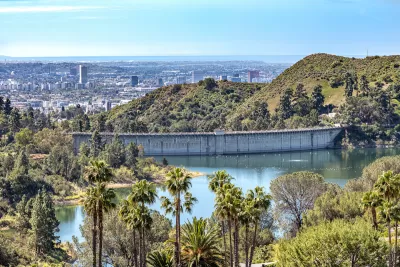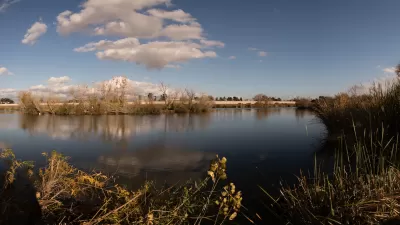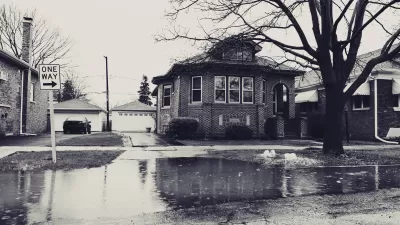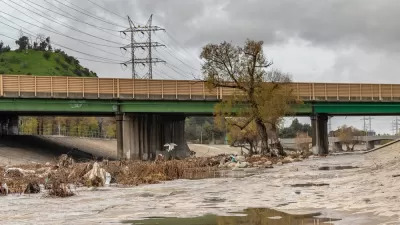A new study reveals that if California could collect and treat more stormwater in cities, it could provide enough water to supply a quarter of the state’s urban population.

Cities across the United States face a range of water challenges, including intensifying impacts of flooding and drought, water scarcity risks, constraints on traditional water supplies facing peak water limits, and water pollution. Innovative ways are needed to address these challenges and improve long-term water resilience.
Stormwater capture is a promising approach. Specifically, It can help narrow the gap between water supply and demand by augmenting and diversifying water supplies. It can also mitigate impacts on communities from intensifying flooding and drought and reduce water pollution. In addition, stormwater capture offers additional co-benefits, such as greening communities and cooling urbanized areas.
As reported by Rachel Becker in this article, a new assessment by the Pacific Institute, in partnership with 2NDNATURE, quantifies the volumetric potential of urban stormwater runoff across the country. The study estimates urban areas have the potential to generate 59.5 million acre-feet of stormwater runoff annually on average. This is equivalent to an annual average of over 53 billion gallons per day. It equals 93 percent of municipal and industrial water withdrawals in 2015, the most recent year with available data.
With respect to California, the analysis found that the Golden State sheds nearly 2.3 million acre-feet of precipitation from pavement, roofs, sidewalks and other surfaces in cities and towns annually. If it were captured and treated, that would be sufficient to supply over a quarter of California’s urban water use or almost 7 million Southern California households each year.
FULL STORY: California’s urban runoff flows down the drain. Can the drought-plagued state capture more of it?

Montreal Mall to Become 6,000 Housing Units
Place Versailles will be transformed into a mixed-use complex over the next 25 years.

Planetizen Federal Action Tracker
A weekly monitor of how Trump’s orders and actions are impacting planners and planning in America.

DARTSpace Platform Streamlines Dallas TOD Application Process
The Dallas transit agency hopes a shorter permitting timeline will boost transit-oriented development around rail stations.

Dead End: Nine Highways Ready for Retirement
The Freeways Without Futures report describes the nation’s most promising highway removal proposals.

Congressman Proposes Bill to Rename DC Metro “Trump Train”
The Make Autorail Great Again Act would withhold federal funding to the system until the Washington Metropolitan Area Transit Authority (WMATA), rebrands as the Washington Metropolitan Authority for Greater Access (WMAGA).

Trump's “Able Bodied” Public Housing Limits Could Displace Over 300,000 New Yorkers
As part of 43% cut to federal rental assistance, Trump is proposing a two-year limit on public housing tenure for “able bodied adults.”
Urban Design for Planners 1: Software Tools
This six-course series explores essential urban design concepts using open source software and equips planners with the tools they need to participate fully in the urban design process.
Planning for Universal Design
Learn the tools for implementing Universal Design in planning regulations.
City of Mt Shasta
City of Camden Redevelopment Agency
City of Astoria
Transportation Research & Education Center (TREC) at Portland State University
City of Camden Redevelopment Agency
Municipality of Princeton (NJ)
Regional Transportation Commission of Southern Nevada





























